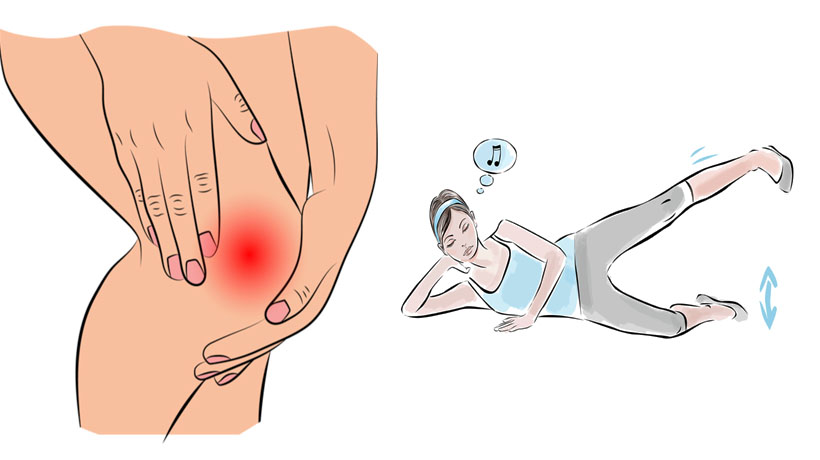Though it may be common to hear about torn ACL injuries that happen to male athletes on T.V., did you know that women actually experience more knee injuries than men? In fact, according to WebMD, we’re two to eight times more likely than men to have certain kinds of knee problems due to the way we are built – a woman’s relatively wide hips can create added stress on the joints. Whether you’re suffering from kneecap pain, ligament tears or simply have sensitive knees, there are still certain exercises you can perform to stay active without the danger of (another) blowout. Of course, prior to tackling these exercises, speak to your doctor and ask if they are right for your specific knee problem. Don’t forget to listen to your body and discontinue if something doesn’t feel comfortable.
Calf raises
As its name implies, calf raises work out the calf muscles in the back of the legs. Stand facing the back of a sturdy chair or a handrail for support. Slowly raise your heels as high as you can and then lower back down. Repeat this for three sets of 10 if it feels comfortable. If you can stand more of a challenge, repeat the exercise with one foot slightly lifted off the floor.
Swimming
If you want a full body workout that’s low impact but highly effective, head to your nearest pool. To get the recommended benefits of swimming, LiveStrong recommends a minimum of 150 minutes per week which may be broken up into 30-minute chunks each day for five days. According to the University of Washington Orthopaedic & Sports Medicine, swimming can reduce joint stiffness, strengthen muscles and bones around the joints and improve overall wellbeing.
Scissor kicks
This exercise simultaneously tones your thighs, abs and hip flexors without putting unnecessary pressure on your knees. Start by lying flat on the ground with your arms down by your sides. While keeping your forearms firmly planted, lift your legs about six inches off the ground. Spread your legs apart and bring them back towards each other, crossing one leg over the other. Repeat for as many reps as you can, alternating legs. It’s important to keep your legs straight with a slight micro-bend in the knees (to avoid them locking). Don’t let your legs or shoulders touch the floor!
Side leg raises
If you’re looking to strengthen your outer legs, hamstrings, quads and oblique muscles (muscles that lie on the lateral sides of the abdominal region), these are the way to go. Lie on one side of your body with your legs stacked and the bottom leg bent for support. Straighten the top leg and raise it to a 45-degree angle. Hold it for five seconds, lower down and aim for about 10 more reps. Switch sides and repeat.
Speed walking
Although running and jogging put stress on bad knees, speed walking is a low-impact form of cardio that works the upper, mid and lower body muscles. Stick to flat and smooth surfaces, and be sure to wear proper shoes/shoe inserts that prevent any instances of foot rolling.
Sources:
https://www.webmd.com/pain-management/knee-pain/injury-knee-pain-16/slideshow-knee-exercises
https://www.webmd.com/pain-management/knee-pain/women-avoid-knee-injury
https://www.livestrong.com/article/404415-is-swimming-good-for-bad-knees/
https://www.gaiam.com/blogs/discover/the-best-cardio-exercises-for-bad-knees



